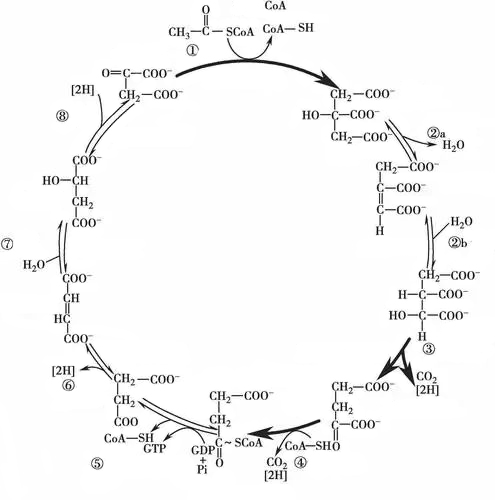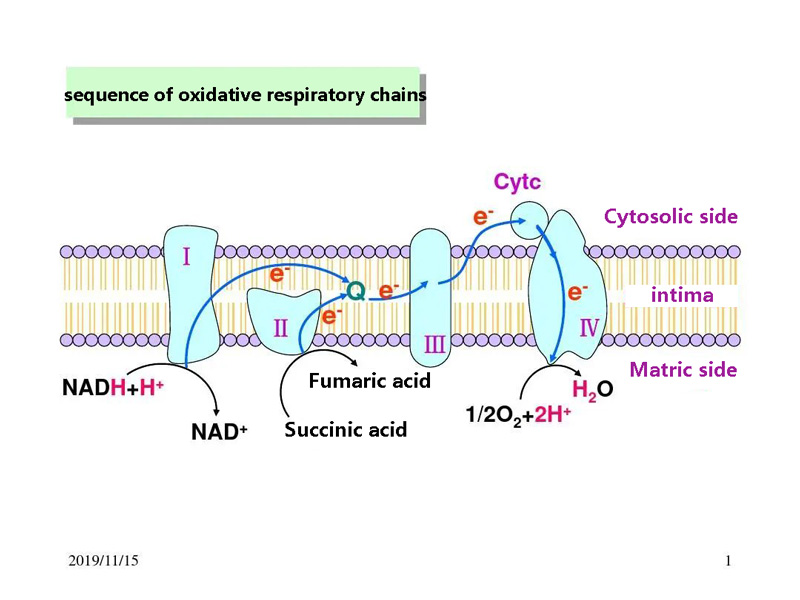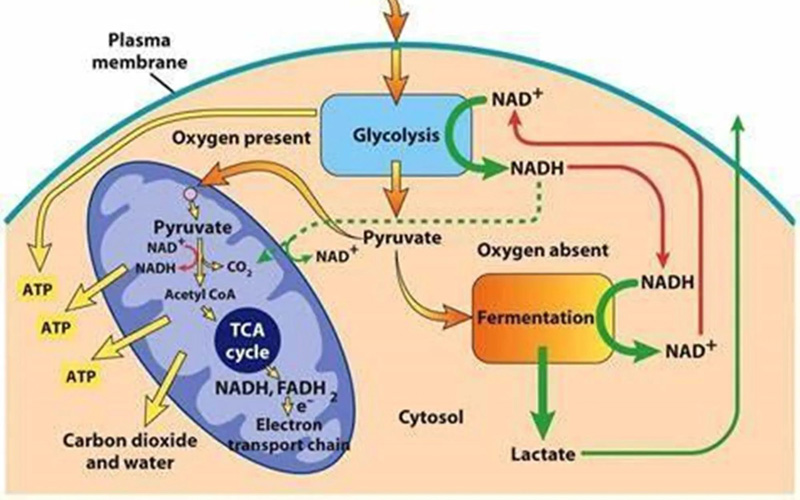The process of mitochondrial ATP production is the core link of cellular aerobic respiration, which mainly takes place in the mitochondria and is divided into three stages, each stage is accompanied by the release of energy and the production of ATP.
Stage 1: Glycolysis
Place of occurrence: in the cytoplasmic matrix
The main process: The glucose molecule broken down into two molecules of pyruvate by the action of enzymes, which simultaneously removes four hydrogen atoms ([H]) and releases a small amount of energy.
Energy utilization: Part of the energy released used to synthesize ATP, producing a small amount of ATP.
Reaction: C6H12O6 (enzyme) → 2 pyruvate + 4[H] + small amount of energy
Stage 2: Citric acid cycle (tricarboxylic acid cycle)
Place of occurrence: in the matrix of mitochondria

Main process: After entering the mitochondrial matrix, pyruvate combines with Coenzyme A to form acetyl Coenzyme A, and then enters the citric acid cycle.
During the cycle, acetyl-CoA progressively oxidized, eventually producing carbon dioxide and water, while stripping off A large number of hydrogen atoms ([H]) and releasing energy.
Energy utilization: Part of the energy released used to synthesize ATP, but relatively little ATP produced at this stage.
More importantly, the NADH and FADH2 produced during the cycle will participate in the subsequent electron transport chain process.
Reaction (simplified) : 2 pyruvate + 6H2O (enzyme) → 20[H] + 6CO2 + a small amount of energy
The third stage: oxidative phosphorylation
Site of occurrence: the inner membrane of mitochondria

Main process: The hydrogen atom ([H]) removed in the first two stages and the oxygen absorbed from the outside world transferred through the electron transport chain under the action of the enzyme complex (such as NADH-ubiquinone reductase, ubiquinone-cytochrome C reductase, and cytochrome C oxidase) on the mitochondrial inner membrane, and finally combine with oxygen to form water, and release a lot of energy.
Energy utilization: Most of the energy released used to synthesize ATP, producing a large amount of ATP. This process is called oxidative phosphorylation and is the most important way ATP is produced in the body.
Key mechanism: On the inner mitochondrial membrane, protons (H+) pumped into the intermembrane space to form a transmembrane proton gradient.
When protons return to the mitochondrial matrix via ATP synthase (complex V) along a concentration gradient, their potential energy drives ADP to bind to phosphoric acid to form ATP.
Equation: 24[H] + 6O2 (enzyme) → 12H2O + large amount of energy
The process of ATP production by mitochondria is a complex and delicate system,
involving three stages: glycolysis, citric acid cycle and oxidative phosphorylation.
Each stage is accompanied by the release of energy and the production of ATP,
of which the oxidative phosphorylation stage is the main stage of ATP production.
This process not only provides cells with the energy needed for various life activities,
but also reflects the close relationship between material metabolism and energy conversion in cells.




